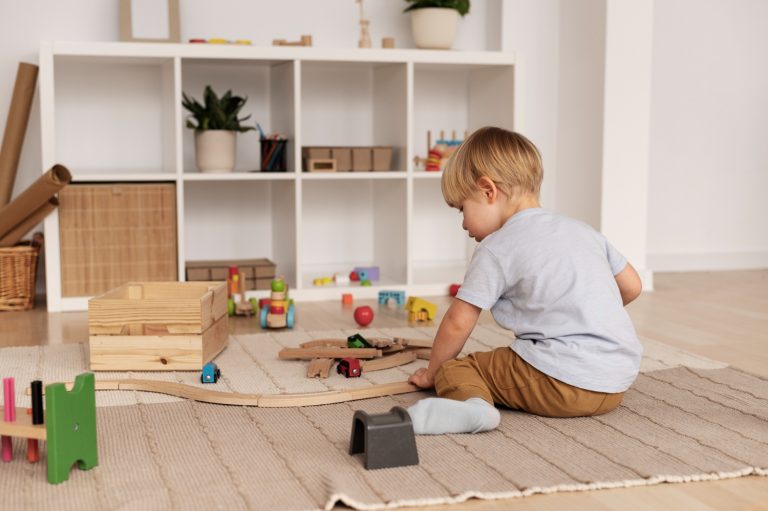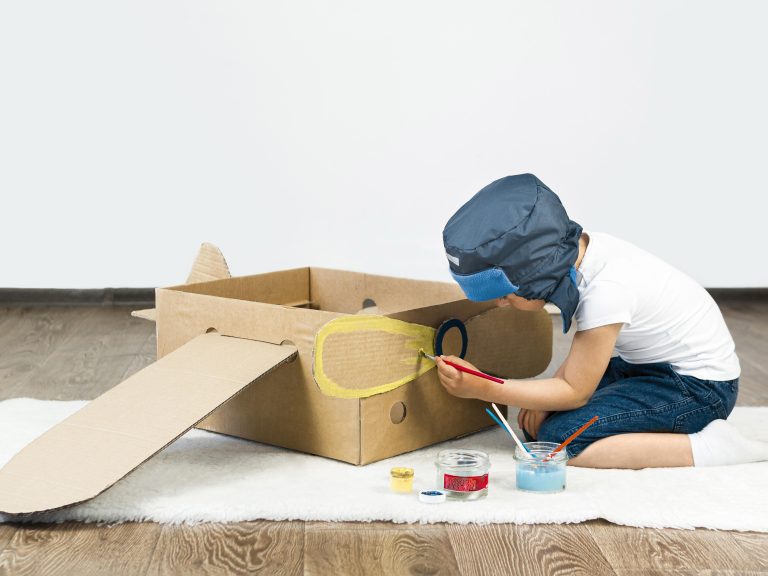Positive Parenting: Practical Tips to Build Stronger Bonds
Parents want discipline without yelling or guilt. They want kids who listen, learn, and still feel safe with them. The internet throws a thousand “systems” at you, but most families need something simple that actually works on a Tuesday night.
This is not a pep talk. It is a playbook. You will get clear definitions, what science supports, and concrete steps you can put to work today.
Promise. Positive parenting is a practical, research-aligned approach that builds cooperation through connection, consistency, and teaching, not through fear. By the end, you will know what it is, why it works, and exactly how to use it with toddlers, school-age kids, and teens.
What Is Positive Parenting?
Short definition. Positive parenting focuses on teaching and encouragement rather than punishments. You set clear expectations, notice and reinforce what you want more of, guide behavior with natural and logical consequences, and keep the relationship strong enough that your words matter.
Where it comes from. The ideas trace back to Alfred Adler and Rudolf Dreikurs. Their core belief was that children need belonging and significance, and that misbehavior often signals a child’s mistaken way of meeting those needs. The modern “positive parenting” umbrella includes methods that turn this into daily habits, like encouragement, problem solving, and firm, respectful limits.
Reality check. Positive does not mean permissive. You can be kind and still be in charge.
If your home has turned into a never-ending debate, you are not “too positive.” You likely need clearer limits, fewer words, and better follow-through.
Why Positive Parenting Works
Connection before correction
A child who feels seen and safe can listen and learn. This is not a vibe. It is how brains wire up. Back-and-forth, responsive interactions with caring adults lay the foundation for attention, language, and self-control. When you connect first, you lower threat and bring the thinking parts of the brain back online.
Teaching beats punishing
Harsh strategies like hitting, shaming, or yelling may produce short-term compliance. They do not build the skills that prevent repeat problems, and they carry risks for harm. Leading pediatric groups advise parents to avoid corporal punishment and focus on consistent, non-violent approaches that teach behavior. (Pediatrics)
Better cooperation over time
Positive parenting translates big ideas into repeatable routines that kids can predict. Predictability and age-appropriate expectations improve cooperation at home. Health agencies summarize these practices for each age so families can focus on what works at that stage.
You are not trying to “win.” You are trying to raise a person who can do the right thing when you are not there.
Core Principles of Positive Parenting
Mutual respect
Respect is the tone and the method. You speak the way you want your child to speak. You protect their dignity during mistakes and require them to protect the dignity of others. Respect also means holding the line. A consistent no is more respectful than a performative yes that turns into resentment.
Try this. Swap “Stop it now” for “I won’t let you hit. I can help you calm, then we will fix it.”
Encouragement over praise
Praise aims at the person. Encouragement aims at the process. You label effort, strategies, teamwork, and small progress. That helps kids see what to repeat next time.
Instead of: “You are so smart.”
Use: “You stuck with a hard problem and tried two ways. That strategy worked.”
Problem-solving together
Positive parenting assumes kids can learn to solve problems with coaching. You name the issue, hear the child’s view, offer two or three workable choices, and agree on a plan. The parent still decides the limits. The child gets a voice in how to meet them.
Frame: “We need the toys picked up before dinner. You can set a five-minute timer or use the sorting game. Which one?”
Natural and logical consequences
Punishment is about blame. Consequences are about cause and effect. You let the world teach when it is safe or you set a logical outcome that fits the behavior.
Consequences are not threats dressed up. If you will not enforce it calmly, do not say it.
Benefits of Positive Parenting
Stronger parent-child bond
Your child learns that you are both safe and serious. You connect first, then keep the limit. That balance builds trust, which is what keeps your influence strong as kids grow.
Less conflict at home
Predictable routines and clear choices reduce power struggles. When expectations stop shifting, kids stop testing as much. You argue less because there is less to argue about.
Resilience and responsibility
Kids who practice naming feelings, solving problems, and taking responsibility for repairs build real grit. You can see it in small moments. They start over without melting down. They try a second strategy. They fix what they broke without a speech.
Quick pause. None of this means every day is peaceful. It means you have a simple way to get back on track.
How to Apply Positive Parenting
Below are age-specific moves you can use right away. They follow one pattern. Connect, set the limit, offer a choice, follow through. Repeat until it is boring. Boring is good. Brains love predictable patterns.
Toddlers
Goals: safety, simple routines, feelings vocabulary, short practice runs.
Discipline example, hitting:
Chores:
Screen time:
Phrase bank:
If you are talking more than ten seconds, you are talking too much.
School-age kids
Goals: skills for independence, empathy, teamwork, problem solving.
Discipline example, homework stalling:
Chores:
Screen time:
Social conflicts:
Academic mindset:
Teens
Goals: autonomy with accountability, healthy risk management, life skills.
Discipline example, missed curfew:
Chores:
Screen time and devices:
Friend drama and big feelings:
College and work prep:
One-liner for teens. “Freedom and responsibility rise together.”
Examples You Can Copy Today
Morning routine, any age
Tantrum or meltdown
Sibling fights
Homework battles
Family meeting, 15 minutes on Sundays
If a routine keeps failing, shrink it. Most “bad habits” are just plans that are too big for the current energy level.
Challenges and Common Missteps
Confusing positive with permissive
If you find yourself repeating rules with no follow-through, you are not doing positive parenting. You are giving speeches. Positive is kind and firm. The firmness is what teaches.
Fix: Fewer words, sooner action, logical consequences that fit the behavior.
Inconsistent enforcement
Kids learn the pattern you run most often. If Tuesday’s rule disappears on Thursday, the new rule is randomness. Randomness invites testing.
Fix: Write the top five family rules. Post them. Use the same wording. If a consequence does not change behavior after a week, it is not close enough to the behavior or you are not enforcing it calmly.
Over-explaining
Explanations teach. Long explanations stall. Most corrections need one sentence now and a short de-brief later.
Fix: Try a ten-second rule. If you are still talking after ten seconds, stop and follow through.
All carrot, no boundary
Encouragement without limits is just cheerleading. Children need friction against reality to build self-control.
Fix: Pair every yes with a limit and every limit with help meeting it. “Yes to your feeling, no to the hitting. Here is how we calm.”
Public pressure
Performing for strangers will make you harsher or softer than you want to be.
Fix: Use a public script. “You are upset. We are leaving now. We will talk in the car.” Do the teaching later.
Limits are part of love. Saying no, calmly and consistently, is a gift.
Frequently Asked Questions
Does positive parenting work with neurodivergent kids?
Many principles still help, like clear routines, visual supports, and calm follow-through. You will likely need more structure, shorter steps, and collaboration with specialists. Kind and firm still applies. Tailor the plan to the child.
What about consequences vs time-outs?
Time-outs used as isolation and shame are not aligned with positive parenting. Short, calm reset breaks that focus on regulation can be useful when paired with teaching and repair. The goal is learning, not banishment.
How do I get my partner on board?
Choose one routine to standardize. Agree on a script and consequence you both can deliver. Track wins for two weeks. Small success builds buy-in faster than debate.
What if I yelled yesterday?
Repair. Own it, name what you will try next time, and reconnect. You are modeling accountability, which is a lesson worth learning.
Conclusion
Positive parenting is not about being endlessly cheerful. It is about leading with respect, teaching skills, and setting limits you actually enforce. You build a relationship that can carry real discipline, then you use that relationship to teach the behaviors you want to see more of. It is practical. It is repeatable. It works better over time than quick fixes that rely on fear.
Ready to go deeper into respect-based parenting with an empathy-first lens? Read Gentle Parenting Explained: Benefits, Criticism, and How to Start. Want to see where positive parenting fits in the bigger picture of approaches and styles? Start with What Is Parenting? A Complete Guide. Curious how this maps to research-backed principles you can use across ages? See What Is Good Parenting? 10 Principles Backed by Research.
You can be warm and still be the authority. That is the job.








